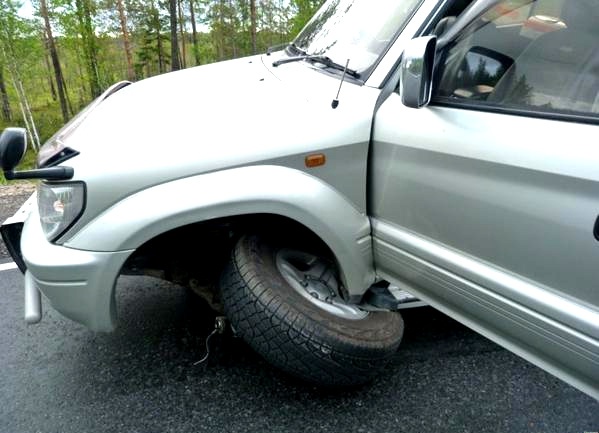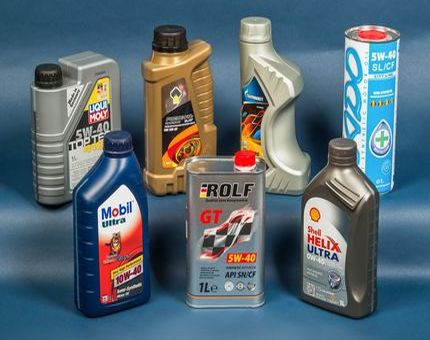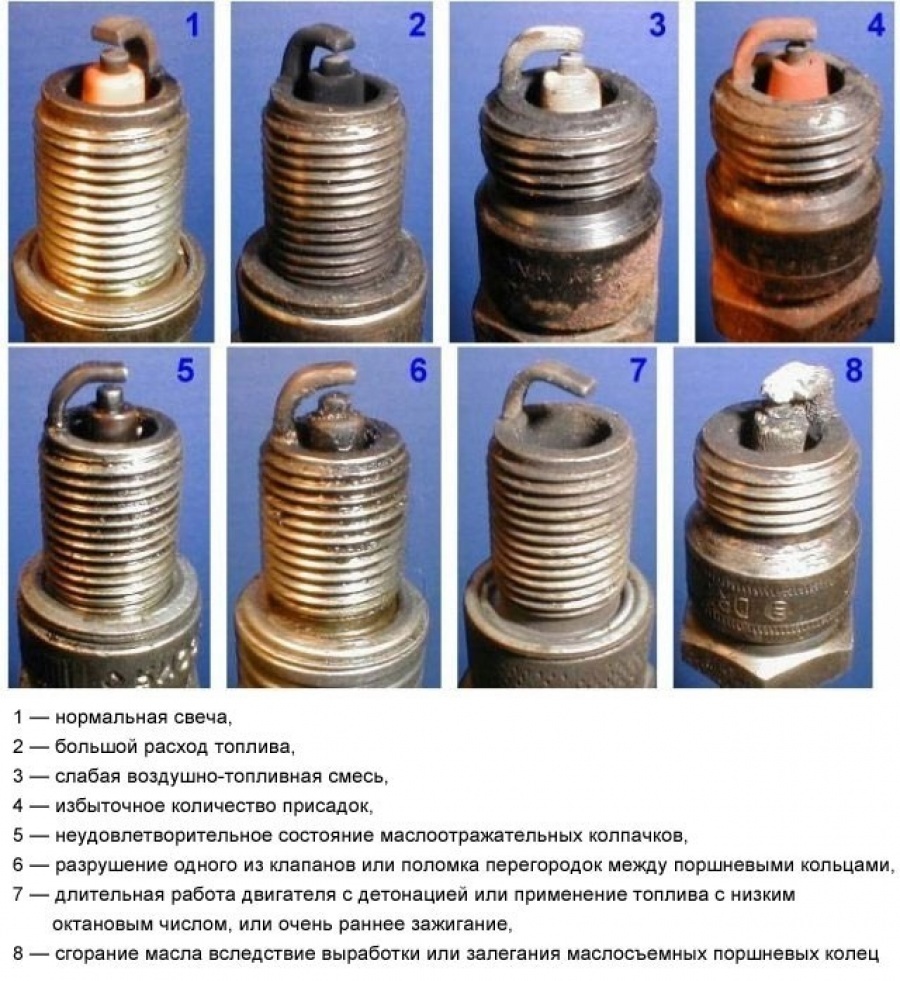
ball breakage
Content
ball breakage capable of provoking an emergency in which the wheel of the car turns outward. But if it just starts knocking when driving, including at high speed, then sad consequences can be avoided. Therefore, a motorist is highly recommended to know all the signs of a car ball joint failure, as well as methods for diagnosing and eliminating them.
Signs of a broken ball joint
Do not know how to determine the breakdown of the ball? The following situations and their signs can serve as an answer to this question, are presented in the table:
| Symptoms of a broken ball joint | Description of symptom and cause |
|---|---|
| Knock from the wheel while driving, especially when driving through pits and various irregularities. | Clanging and knocking can occur at any speed. It is especially well heard when a loaded car hits a pit, sharply entering a turn with body roll, and sharp braking. It can be both one-time and recurring in nature, during the peak load on the ball joint. An exception is the case when the grease in the CV joint freezes during the cold season, but after warming up and a short drive, it warms up and the knock stops. |
| Changing the characteristics of the collapse-convergence. | Usually, the wheel “suffers” more, on whose side the ball joint has worn out more. Such changes in alignment will not be visible to the eye, therefore, to identify a breakdown, it is recommended to use the services of car services, where they measure and restore alignment. An indirect sign of a breakdown in this case will be the “eating” of rubber on the edge of the wheel. |
| "Wag" of the car on the road. | This behavior is caused by the appearance of play in the ball joint. Because of it, the wheel staggers when driving and the car is not able to keep the road smoothly. Moreover, this yaw will increase as the speed increases. However, at the initial stage, this sign is quite difficult to catch, especially if the car mainly drives on bad (rough, broken) roads. |
| Creak while turning. | In this case, the creak coming from the front wheels is in mind. Since creaking sounds can also come from the power steering or steering rack. Therefore, in this case, it is better to perform an additional inspection with a ball mount. |
| Uneven wear on front tires. | When, as a result of damage to the ball bearing, the steering wheel is not strictly vertical, but at an angle to the road surface, then along its inner edge (the one that is closer to the internal combustion engine), the tread wears out more than on the rest of the wheel surface. You can check this simply visually if you examine the corresponding surface of the tire from the side where the knocking occurs while driving. it can also contribute to the beating of the wheel when driving. |
| During braking, the trajectory of the car changes. | When driving straight ahead and braking, the vehicle may veer slightly to the side. And in the one on the side of which the damaged ball joint is located. This is due to the fact that one of the wheels is slightly tilted, which creates an effort for movement. Usually, characteristic clicks are heard coming from the area of \uXNUMXb\uXNUMXbinstallation of the ball joint. As braking increases, the click sound may also increase. |
If at least one of the listed signs of failure appears, it is necessary to determine the faulty assembly, for this, check not only the ball, but also other suspension elements. Often the problem appears in the complex, that is, both the ball joint and other suspension and steering elements partially fail. And the sooner they are diagnosed and eliminated, the cheaper it will cost and the safer and more comfortable it will be to drive a car.
Causes of ball failure
There are a number of typical reasons why a ball joint becomes unusable. Among them:
- Natural wear and tear. On average, a ball joint can travel between 20 and 150 kilometers. However, if the part is more or less of high quality, then problems with it can begin after about 100 thousand kilometers by car. Wear is affected by many factors - the quality of the part, operating conditions, care of the part, the presence of lubrication, the integrity of the anther, driving at high speed on rough roads, sudden changes in temperature, off-road driving, and so on.
- Torn boot. This part of the ball joint, roughly speaking, is considered a consumable item, so it is advisable for the car owner to periodically monitor its condition, namely, integrity. If the anther is damaged, then moisture, sand, dirt, and small debris will surely get inside the ball joint while driving. All these elements will form an abrasive material, which will naturally wear out the inside of the support. Therefore, torn anthers must be changed in a timely manner using the appropriate lubricant.
- Increased loads. First of all, this applies to driving a car at high speed on rough roads. Under such conditions, impacts fall on various suspension elements, including the ball joint. Naturally, this leads to its wear and damage. Another situation is the overload of the car, that is, the transportation of the maximum permissible weight of goods on it, or even in excess of the permissible weight. A particularly difficult option is the combination of fast driving on rough roads with a significantly loaded car.
- Lubricant production. It is removed from the ball for natural reasons - drying, evaporation. As mentioned above, if the boot is damaged, the grease can be removed very quickly due to natural causes, which will lead to increased wear of the ball joint. Accordingly, it is useful to periodically add lubricant to the ball joint, including when installing a new assembly, since manufacturers often do not leave as much lubricant on new bearings as required by the automaker's instructions. There are special tools for adding lubricant to the ball joint. And as a lubricant, you can use lithium greases (for example, Litol), ShRB-4 and others.
Remember that the causes of ball joint failures do not appear overnight. An exception can only be an initially defective part (for example, with a crack on the body), but the probability of this is quite small. Therefore, it is necessary to diagnose the ball joint also at the initial stage of failure. And when buying, it’s also better not to skimp and pay a little more, because the more expensive the part, it will be more durable (in most cases). Their main difference is the quality of the material, the type and amount of lubricant used, as well as tear resistance.
How to determine a broken ball
It is believed that the best method for checking the ball joint will be the service of a car service, where there is a lift and a corresponding stand. There, experts will be able to detect a breakdown not only of the ball joint, but also of other elements of the car's suspension.
However, if the task is only to check the ball joint, then this can be done in garage conditions with the help of the installation tool alone. Well, except that it is desirable for the car to stand on a pit or overpass. It will be possible to determine a faulty ball joint by the main symptom - knocking and free movement of the ball pin when creating a mount force on it.
Quick check
First of all, you need to "listen" to the ball joint. However, for this it is better to take an assistant, and preferably one who knows what sound a broken support makes and, in general, is more or less versed in the elements of the car's suspension. The verification algorithm is simple - one person swings the car from side to side (in the direction perpendicular to the movement), and the second listens to the sounds coming from the suspension elements, namely, from the ball joint.
If such rocking does not work, it is worth jacking up the car from the side where you want to check the support. Then, holding the brake pedal (this is done to eliminate possible bearing play), try to swing the wheel in the direction perpendicular to the movement (that is, away from you and towards you). If there is play and / or “unhealthy” clanging sounds, then there are problems with the ball.
The backlash of a broken ball will be checked using a mount. So, the car must be jacked up, and the flat end of the mount placed between the lever and the pivot pin. Then, while one person slowly rotates the wheel, the second one presses on the mount. If there is a backlash, then it will be well felt, and even visible to the eye. A similar procedure can also be performed without turning the steering wheel, especially if the ball joint is already significantly worn out.
Is it possible to drive with a broken ball
Many motorists who have encountered such a problem for the first time are interested in the question of if the ball is knocking, is it possible to drive with such a breakdown? The answer to it depends on the degree of wear and damage of the specified node. If a knock at the ball joint on the go just appeared and at the same time the car also does not “drive” along the road, it does not knock when cornering, that is, there are only early signs, then you can also drive on such a car. However, then follow, so that the speed of movement is not high, and also try to avoid holes and bumps. And, of course, you still need to think about the upcoming repairs. After all, the earlier it is produced, the, firstly, it will cost less, and, secondly, the car can be operated safely!
If the breakdown of the ball joint has already reached such an extent that the car “fidgets” on the road and the knock of the ball joint on the go is clearly audible, then it is better to refuse to operate such a car until the repair is completed. In extreme cases, you can drive it to a car service or garage at low speed and observing the rules of safe driving, where you have to replace it (usually the ball joint cannot be repaired and it is only replaced with a new one).

